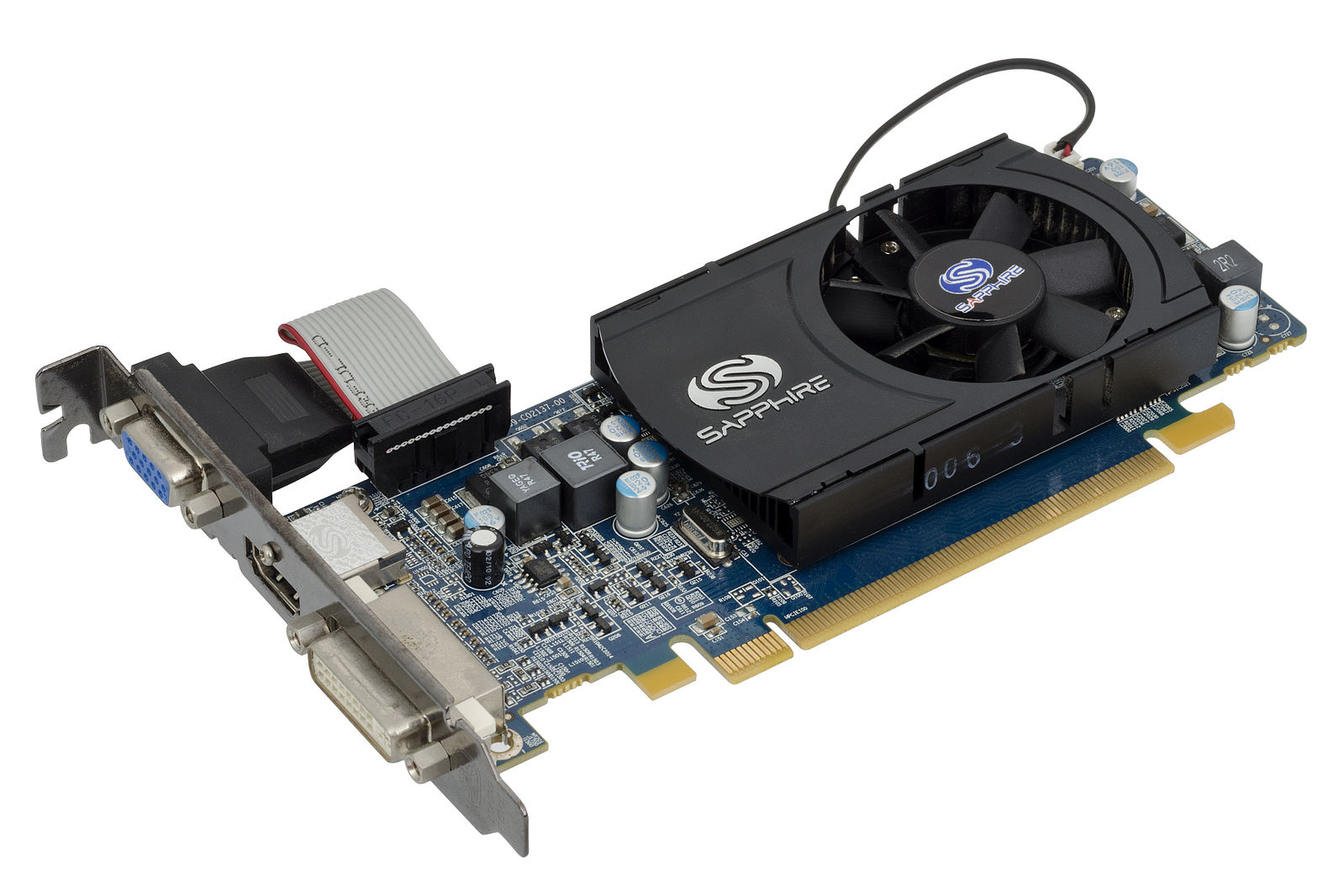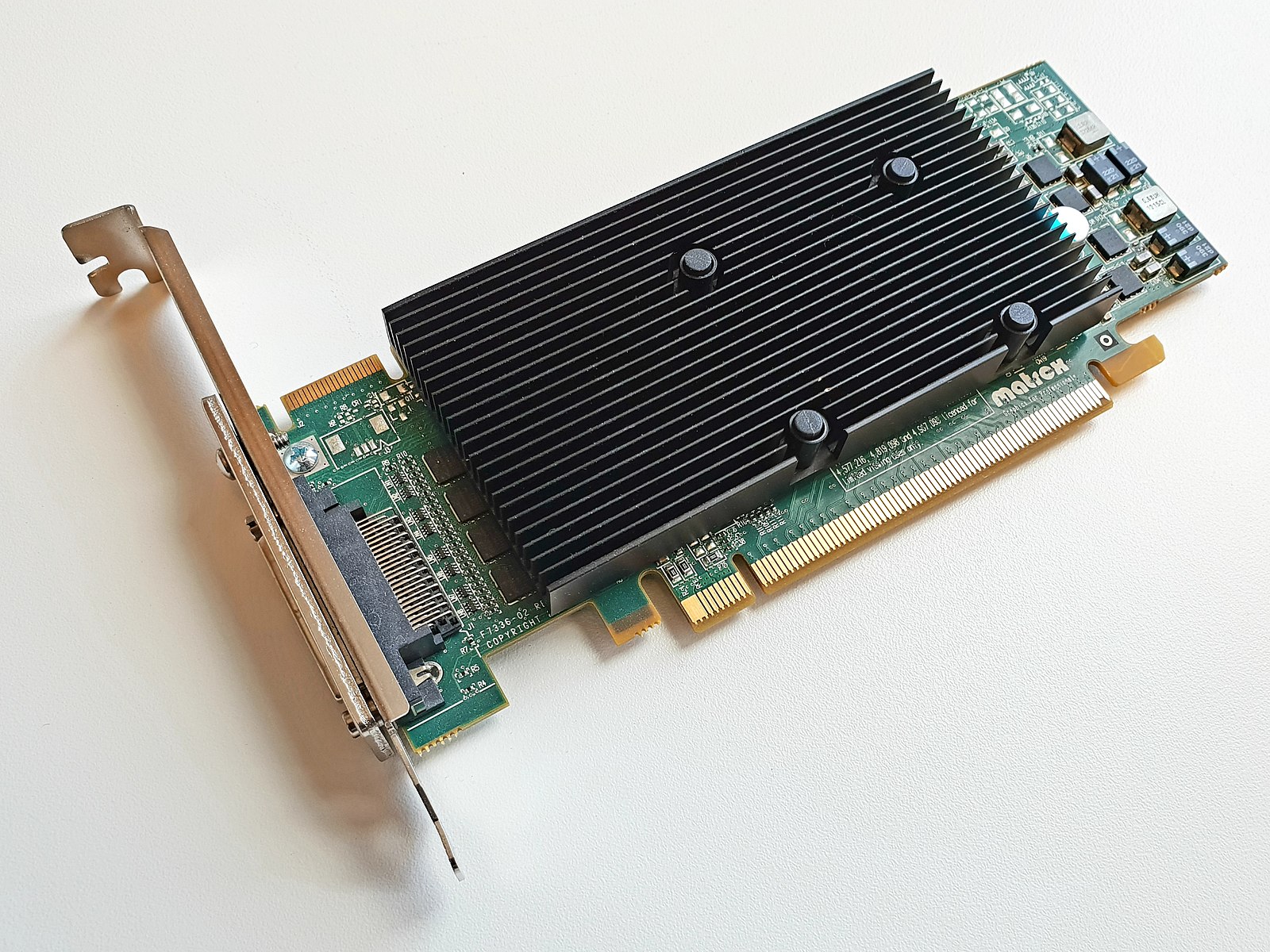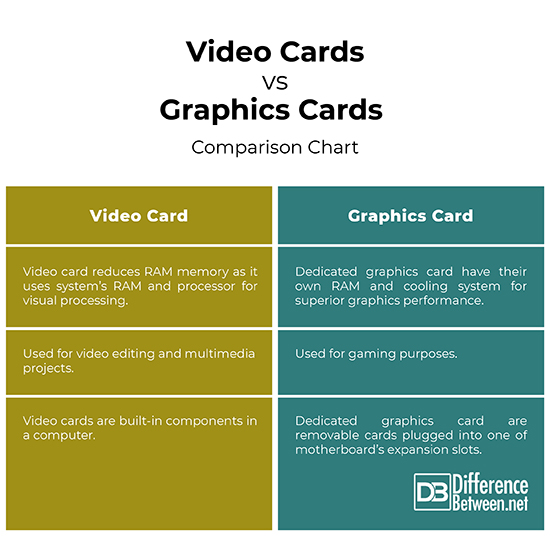Different Between Graphics Card and Video Card
Video and graphics are the basic elements of multimedia along with text, sound, images, and animations. When all these elements work together on a computer, we call it a multimedia computer. Multimedia is nothing but a means of imparting information in a way that all the above elements can be accessed interactively. Graphic devices are the core operating system components responsible for representing graphical objects and transmitting them to output devices such as monitors and printers. A video card is one such important hardware component which acts as the interface between the monitor and the computer. It provides the means for the computer to interact via the monitor so it can display what the computer is doing.
Present day personal computers, however, use the term graphics processing unit (GPU) or graphics card over video cards. Professional video workstations often use both video cards and graphics cards to generate a feed of images to a display device. Today, both the terms are often used interchangeably because they are technically the same – an expansion card to generate output images and transmitting them to a display device. Graphic cards are a dedicated hardware component dedicated solely to video processing. They have their own memory and processing power to fulfill the higher processing requirements for visual data.
What is a Video Card?
A video card is sometimes called a graphics card, graphics adapter, display card, or video controller. It is a piece of hardware responsible for processing any graphics generated by the motherboard and transmitting them to the display unit. It is like a circuit board that fits in a slot on a computer’s motherboard. The monitor plugs into the socket on the video card and on the backside of the computer. The board consists of a special electronic circuit consisting of a graphics processing unit and a visual processing unit as well as a heat sink to spread out the heat produced. Other components of a video card are video BIOS, video memory, RAMDAC, video graphics array, digital visual interface, HDMI and display port.
The video card controls display factors such as resolution, colors displayed, and the speed of the images displayed. However, sometimes video cards are integrated directly into the motherboard or CPU, which are called integrated or on-board cards. Originally video cards used to be dumb and their function was to convert digital signal to analogue signal. A monitor then converts the analogue signal into text or images. One of the recent advances in the video cards is the introduction of graphics accelerators – a video card with its own processor similar to a CPU.
What is a Graphics Card?
Like a motherboard, a graphics card is a printed circuit board that houses a processor and a RAM. Also called as graphic adapters, video cards, or display cards, a graphics card or the integrated graphics component determines the graphics capabilities of the computer, including the screen resolution, the number of bits used to store color information about each pixel, the number of colors used to display images, and the number of monitors connected via the graphics card. It also has an input/output system (BIOS) chip, which stores the settings of the card and performs diagnostics on the memory, input and output at startup.
The three most common types of interfaces used to connect a monitor to a computer are VGA (Video Graphics Array), DVI (Digital Visual Interface), and HDMI (High-Definition Multimedia Interface). VGA uses a 15-pin D-shaped connector and is commonly used with CRT monitors and other flat panel monitors. DVI uses a rectangular connector and is frequently used by digital monitors such as LCD monitors and digital HDTVs. HDMI is a relatively new technology that uses a smaller connector and used in display devices supporting high-definition content. Graphics cards integrated into the motherboard are called integrated graphics or on-board cards. However, on-board cards can be disabled to add a powerful, high-performance graphics card.
Different between Graphics Card and Video Card
Terminology for Graphics Card vs Video Card
– In technical terms, video cards and graphics cards are the same thing – an expansion card to generate output images and transmitting them to a display device. The terms are often used interchangeably to refer to the hardware component in a computer that generates visual information and transmits them to the monitor. Video/graphics cards are responsible for handling the processing of the visual data that you see on the display device.
Technology involved in Graphics Card and Video Card
– The technology consists of a special circuit board that goes into one of the expansion slots on the motherboard. The component on the card itself consists of a graphics processing unit, a visual processing unit, and a heat sink to spread out the heat produced. Other components of the video card are video BIOS, video RAM, RAMDAC, and video input/output system. Video cards that are integrated into the motherboard are called integrated or on-board cards. The three most common types of interfaces used to connect a monitor to a computer are VGA, DVI, and HDMI.
Integrated Graphics
– Although, the terms video cards and graphics are used interchangeably in present day personal computers, there is a difference between integrated graphics and a video card. Integrated graphics are less expensive, more compact, and simple with lower energy consumptions than their dedicated counterparts that are standalone video cards that are plugged into the motherboard’s expansion slot. The performance of integrated graphics is, however, inferior to dedicated cards which have their own RAM and cooling system for superior processing and graphics performance.
Video Cards vs. Graphics Cards: Comparison Chart
Summary of Graphics Card vs Video Card
Today, both the terms are often used interchangeably because they are technically the same – an expansion card to generate output images and transmitting them to a display device. Graphic cards are a dedicated hardware component dedicated solely to video processing. They have their own memory and processing power to fulfill the higher processing requirements for visual data. The only difference is between a built-in video card called integrated graphics and dedicated graphics. Video cards that are integrated into the motherboard are called integrated or on-board cards. The performance of integrated graphics is, however, inferior to dedicated cards which have their own RAM and cooling system for unmatched graphics capabilities and visual processing.
- Difference Between Caucus and Primary - June 18, 2024
- Difference Between PPO and POS - May 30, 2024
- Difference Between RFID and NFC - May 28, 2024
Search DifferenceBetween.net :
Leave a Response
References :
[0]Image credit: https://commons.wikimedia.org/wiki/File:Sapphire-Radeon-HD-5570-Video-Card.jpg
[1]Image credit: https://commons.wikimedia.org/wiki/File:Matrox_graphics_card.jpg
[2]Andrews, Jean. A+ Guide to Managing and Maintaining Your PC. Boston, Massachusetts: Cengage, 2006. Print
[3]Morley, Deborah and Charles S. Parker. Understanding Computers: Today and Tomorrow. Boston, Massachusetts: Cengage, 2014. Print



